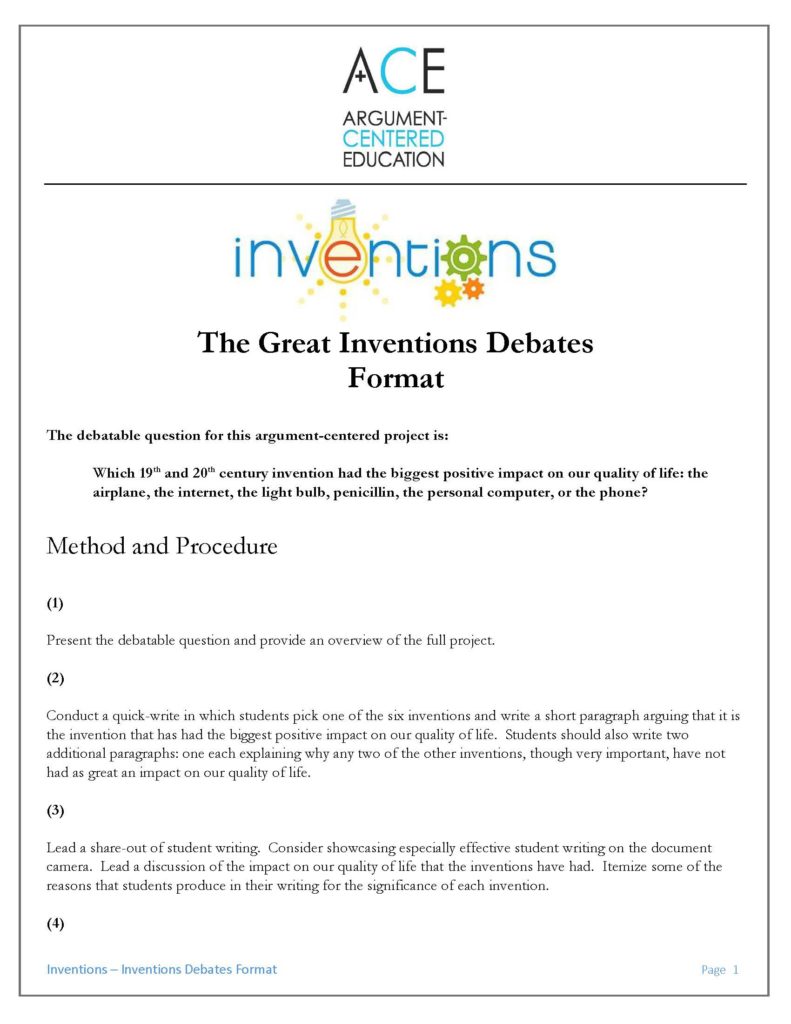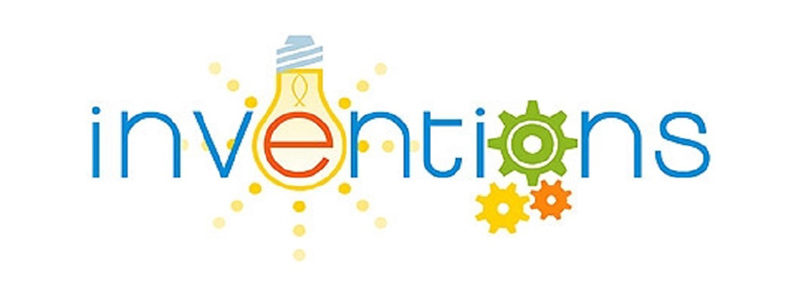
The Great Inventors and the Great Inventions Debates
We have been working with our middle school partners’ social studies teachers on an argument-centered project that has students studying and making arguments about the great inventors and inventions of the 19th and 20th centuries. The project can be implemented in a middle school science and engineering unit, too. And with some additional researching and reading, it is appropriate for a 9th or 10th grade social science classroom. We have designed it to fit within one week of classes, so it is also a bit more compact than most classroom debate projects.
The debatable question for the project is:
Which 19th and 20th century invention had the biggest positive impact on our quality of life: the airplane, the internet, the light bulb, penicillin, the personal computer, or the phone?
We are laying out the full format and resources, to enable you to dig deeper into argument-centered instruction through another model.
Method and Procedure
(1)
Present the debatable question and provide an overview of the full project.
(2)
Conduct a quick-write in which students pick one of the six inventions and write a short paragraph arguing that it is the invention that has had the biggest positive impact on our quality of life. Students should also write two additional paragraphs: one each explaining why any two of the other inventions, though very important, have not had as great an impact on our quality of life.
(3)
Lead a share-out of student writing. Consider showcasing especially effective student writing on the document camera. Lead a discussion of the impact on our quality of life that the inventions have had. Itemize some of the reasons that students produce in their writing for the significance of each invention.
(4)
Distribute the Media List. Make sure that all students have a Chromebook, a tablet, or a laptop in front of them. Choose one of the background sources and conduct a read aloud with it, asking and answering questions on the content of the invention descriptions, especially on the six inventions in our debatable question.
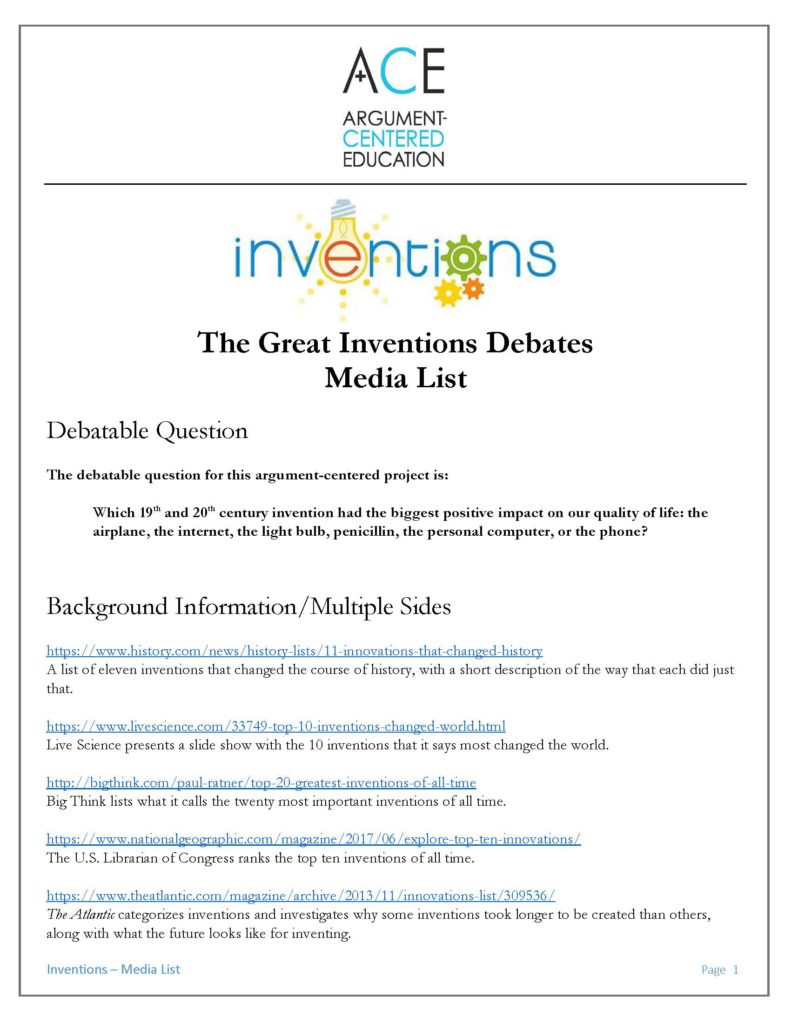
(5)
Partner students into pairs. Ask pairs which invention they prefer to argue for, and as far as possible assign pairs their preferred invention. Assign inventions so that there is close to an equal number of student pairs assigned to each.
(6)
Distribute argument builders and counter-argument-builders, one of each to every student-pair. Tell the student-pairs that one of them will role-play the inventor of their invention (or a representative from the company credited with the invention, e.g.,. IBM in the case of the personal computer). The other student will be an advocate for their partner and his or her invention. The inventor will make the arguments and give the rebuttal; the advocate will give the counter-arguments and make the closing arguments.

(7)
Model the completion of the argument-builder and counter-argument builder using an argument and counter-argument from another argument-centered project or activity. Circulate while students work on building their argument builders and counter-argument builders, using the Media List to research their inventions and the other inventions (note that each invention has one negative, critical source on the Media List). Provide real-time and immediate feedback to students. If you have time (though this project is designed to be compact into a few class periods), collect drafts of argument and counter-argument builders, give feedback either individually or “analytics” that identify patterns in student work, and then have students revise their builders.
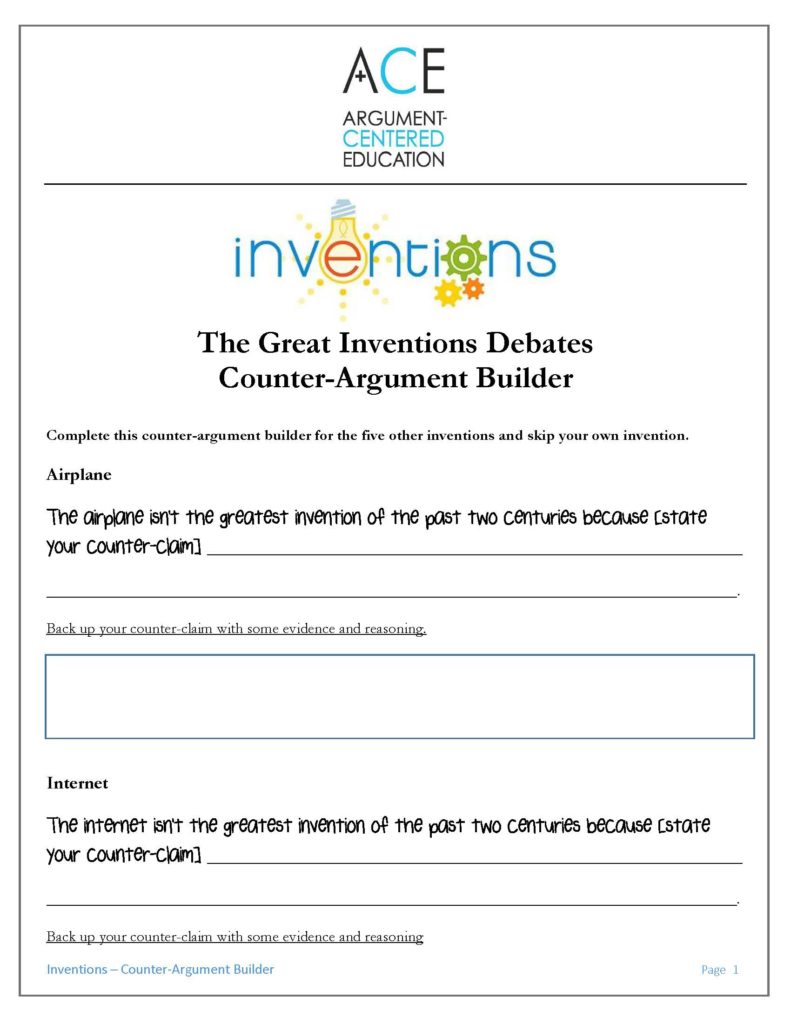
(8)
When you are ready to begin the Great Inventions Debates, distribute ballots to each student. Explain that when students are not debating they will be judging the debates, using one ballot for each debate. Review the expectations in completing the ballot, most especially the requirement that judges evaluate the arguments – evidence, reasoning, critical thinking, counter-arguments, rebuttals, and closing statements – of the debate, and nothing else. Judges should be careful not to allow their own view of the greatest invention cloud their objectivity in judging the argumentation in the debate only.
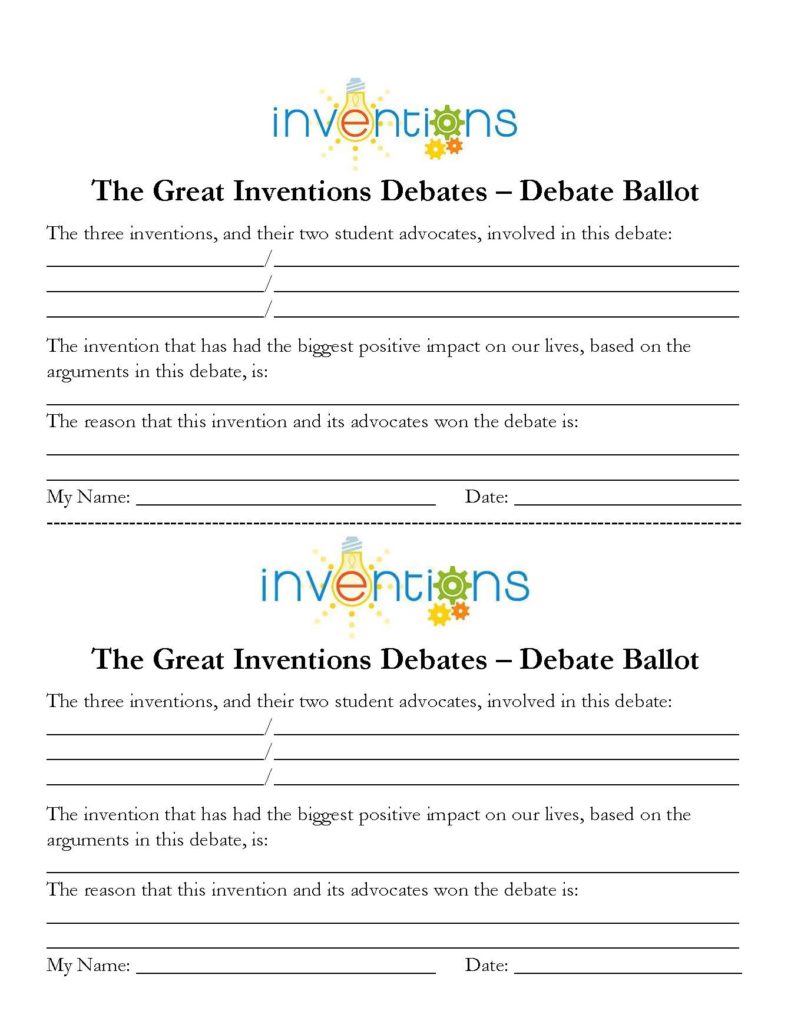
(9)
Conduct the Great Inventions Debates by selecting three pairs at a time, having them sit in front of the class, facing their peers. Each debate will last about 20 minutes, so it is possible to fit three of them into one 60-minute class period. Each debate directly involves six students, so five debates will include all students in a class of 30.
The actual format of the debate is laid out here.
Arguments (90 seconds per team, about 5 minutes total)
Each of the three inventors speaks in turn, presenting their two arguments for their invention being the greatest of the past two hundred years. Students can of course use their argument builder, but they should not simply read it (eye contact is important, and they should know enough about their invention not to be reliant on reading the builder).
Counter-Arguments (90 seconds per team, about 5 minutes total)
Each of the advocates speaks in turn, presenting their single counter-argument against each of the other two inventions. Here again, students can use their builders, but they should not be merely reading them.
Rebuttal Arguments (90 seconds per team, about 5 minutes total)
Each of the inventors speaks in turn, rebutting the counter-arguments to their invention.
Closing Arguments (5 minutes total)
This is an open period of argumentation. Any of the advocates can either respond to the rebuttal arguments of another inventor, but the bigger objective is to try to evaluate the competing arguments throughout the debate, putting them together in a way that favors their invention. This often means proposing one of the arguments as most important, based on a proposed criterion.
Everyone should be flowing the debate, tracking the arguments on a flowsheet. The flowsheet helps everyone keep a record of the arguments and responses, and makes following and understanding a debate more objective. Flow sheets should be collected and included in assessment.

(10)
Students should be assessed using a standard Argument-Centered Education debate assessment. Teams can be given additional credit if they win their debate, based on your and their peers’ votes.
